Do you schedule social media updates?
Want to know the best days and times to share?
Creating a social media calendar helps you deliver a steady flow of content to your followers.
In this article you’ll discover how to create an effective posting schedule for your social media updates.
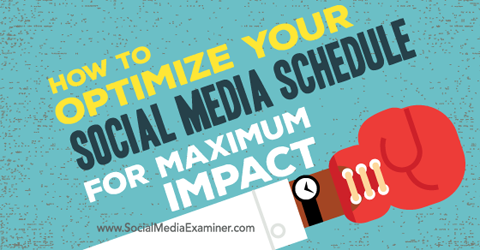
Discover how to optimize your social media schedule for maximum impact.
#1: Determine a Daily Posting Frequency
Just like you plan a blog schedule, consistent social sharing can help you stay top of mind. A calendar of when you plan to post to each platform helps you see when you have gaps in your sharing schedule or when you have too much going on at once.
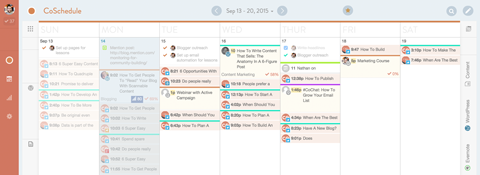
Review your calendar regularly to see gaps and content overloads in your schedule.
Take these informal guidelines into account when deciding how many times you’ll post on each social network.
- Socialbakers reports you should post to Facebook once a day for the best engagement.
- For Twitter, Salesforce recommends you start with one to four tweets a day.
- Data directly from LinkedIn and compiled by Buffer suggests you’ll reach 60% of your connections if you post on LinkedIn 20 times a month.
- SumAll recommends you pin five times a day.
- Brands can safely post to Instagram up to 15 times per day.
One glance at your social media calendar and you’ll know where to fill in gaps and remove extra messages from the overcrowded days and times.
#2: Post at the Right Time of Day
Once you know which days you’ll be posting to each network, you’ll need to find the best times to share your content on each platform.
Don’t just pick a few times to regularly share content. Try different times each dayto give your social media schedule some flexibility for best results. Use trial and error, and check engagement stats to find the best times to share from your own accounts.
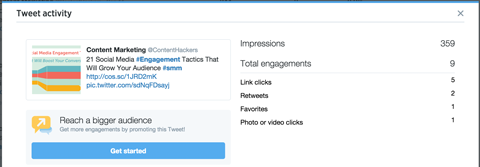
Share your content at the best times on your audience’s preferred networks to improve the impact.
Analyzing data from QuickSprout, Buffer, Fast Company and others to find the best times for social media posts, revealed the following insights:
- Try posting to Facebook on Wednesdays at 3 pm, Thursdays and Fridays from 1 to 4 pm, and Saturdays and Sundays from 12 to 1 pm.
- Tweet from 12 to 3 pm, and at 5 pm during the workweek.
- Post to LinkedIn just outside of working hours (7:30 to 8:30 am, and 5 to 6 pm) and on lunch breaks at 12 pm on Tuesdays, Wednesdays and Thursdays.
- Pin from 2 to 4 am and 2 to 4 pm.
- Avoid posting to Instagram from 3 to 4 pm on Mondays and Thursdays.
Note: Most of those studies analyzed data in the United States. With 80% of the U.S. population in the Eastern and Central time zones, those time zones may be your best bet for optimal reach.
#3: Share Your Content More Than Once
Some people create great content, and then lose out on a ton of traffic because they only share it right after it’s published, and only one time per social network.
Sharing your content more than once can get you 3,150% more traffic all within your first day of publishing.
Imagine what could happen if you spread out your social media sharing to publish links to your content throughout the week, month and year after the original publish date.
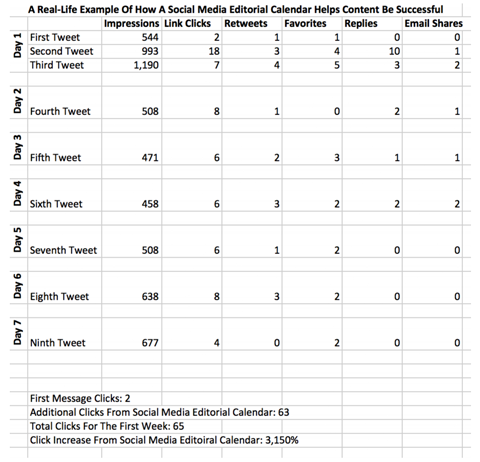
Share your content multiple times on your social media networks like Twitter to grow your traffic.
Here’s a schedule for sharing your content multiple times on social media:
- Schedule social messages to announce new content right when it publishes.
- Share your post again a few hours later on the same day. A tweet’s average lifespan is 18 minutes, so sharing it again, even on the same day, increases your visibility.
- Schedule a few more social messages for the following day to get the word out, while the content is still fresh.
- Drip a few more social messages the following week to reach people who missed it the first time around.
- Scatter at least one message per week, over the course of the next month, on all of your networks.
#4: Vary Your Message
Mix up your social messages to keep your updates fresh on different sites. This is especially important when you share your content more than once.

Switch up your social media messages to keep your feed fresh.
Here are some ideas for crafting different messages for a single piece of content:
- Reference quotes from people in your posts. Then share them and tag the influencer. These work really well as inline Click To Tweet boxes, which provide a visual break in your blog posts.
- To inspire click-throughs, ask your followers a question related to the content. Curiosity and intrigue generate traffic.
- Highlight big takeaways. Most posts are split up with subheads, which are great snippets for social sharing. It’s even better when each section has a relevant image to complement the takeaway, which you can also share.
- Incorporate the meta description from your content into your messages. It’s a great way to entice those searching to click through to read your content.
#5: Use URL Tracking to Measure Engagement
Just as important as knowing when and how to post your content, is knowing when to retire it.
Reviewing your metrics regularly to determine what’s working and what isn’t lets you keep content that’s still relevant in your social rotation, while identifying anything that isn’t performing well.
Measure the response to the content you share on social media by combining Google’s UTM tags with a Google Analytics dashboard. Another option is to use a URL shortening tool like Bitly to track how many clicks you get for specific posts.
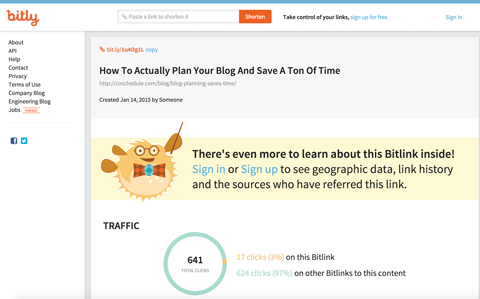
Use Bitly to shorten the URLs you share in your social messages to see how many clicks your social messages get.
Final Thoughts
To get the most engagement, visibility and reach, reshare your content on multiple networks at various times and in different ways.
It’s also a good idea to incorporate material from other influencers. A general guideline is that 80% of your social shares should be your own posts, while the other 20% are from others.
Use these tips to make sure your content stays fresh and valuable to your audience.
What do you think? How do you plan your social media schedule? What type of content gets the best results? Please share your thoughts in the comments.
To view the original article Click Here

No comments:
Post a Comment